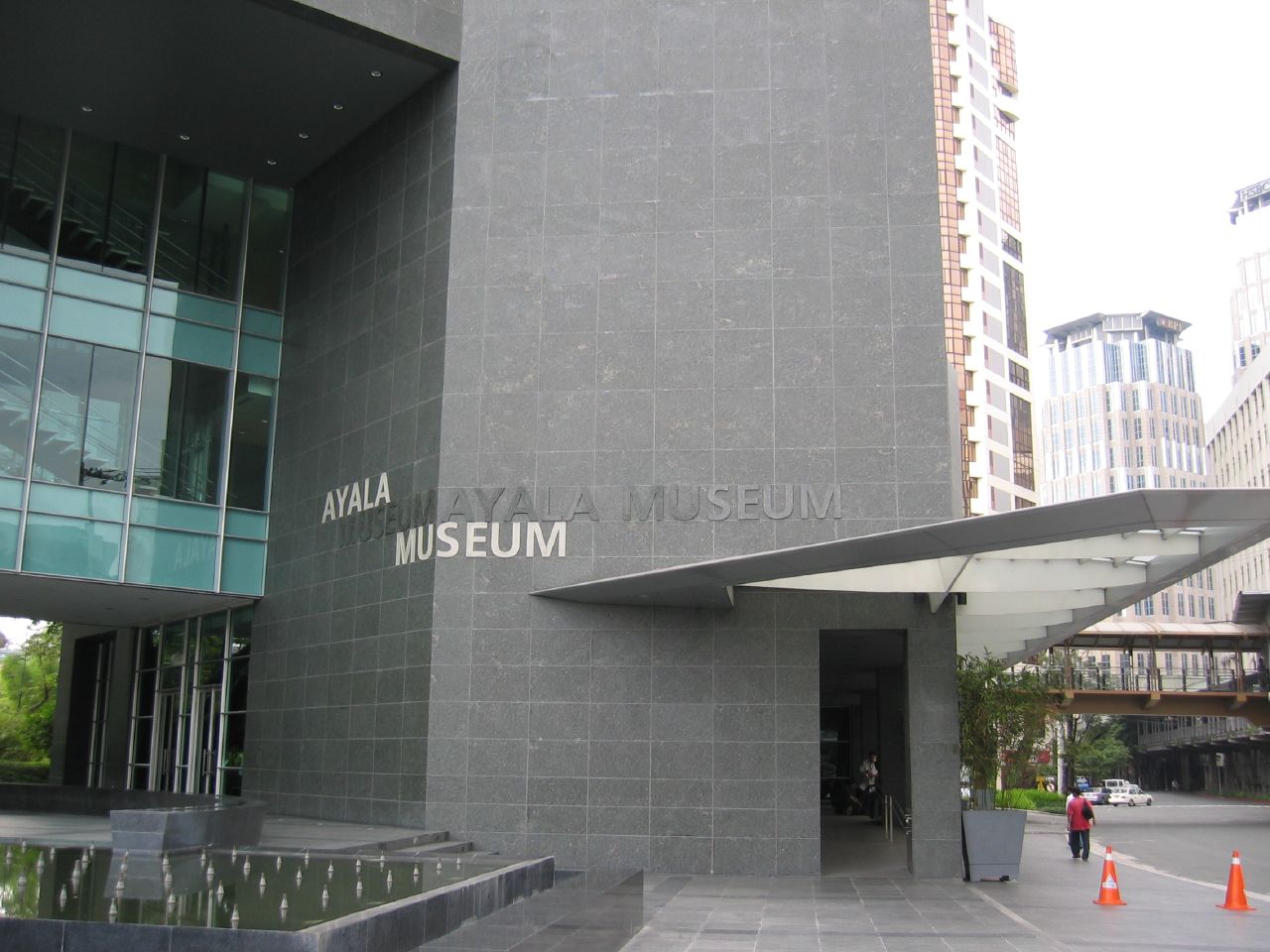- Ayala Museum
Infobox Museum
name = Ayala Museum
imagesize = 200
map_type =
map_caption = The Ayala Museum
latitude =
longitude =
established =1967
dissolved =
location =Makati City ,Philippines
type = Art and history museum
visitors =
director =
curator =
publictransit =
website = http://www.ayalamuseum.orgThe Ayala Museum is an art and history
museum located at the corner of Makati Avenue and Dela Rosa Street inMakati City ,Metro Manila , thePhilippines . Part of theAyala Center , it is one of the leading museums in the Philippines, as well as one of the most modern.Fact|date=September 2008History
The museum was envisioned in the late 1950s by the artist
Fernando M. Zobel de Ayala and was formally inaugurated in 1967 as a project of the Ayala Foundation, Inc., which was then known as the Filipinas Foundation, Inc. The museum was located in the Insular Life Building along Ayala Avenue, also in Makati City. In 1974, the building moved to its present location along Makati Avenue and occupied a building designed by National Artist for Architecture,Leandro V. Locsin . The building is known for its juxtaposed huge blocks, which allowed for wide spaces that are suitable for the museum's collections and exhibitions.Permanent collection
* "Diorama Experience" — The core of the museum's historical collection is a group of sixty handcrafted
diorama s which chronicle the history of the Philippines. These dioramas were crafted by artists from Paete, Laguna and have been a prominent attraction of the museum since their completion in 1973. This collection depicts sixty major events and themes in Philippine history, from thepre-historic period to the recognition of Philippine independence by theUnited States onJuly 4 ,1946 . The exhibit culminates with "People Power", which is amultimedia presentation that chronicles the events that led to the 1986People Power Revolution , including themartial law years.* "Boat Gallery" — Highlighting the diorama collection of the museum is a boat gallery, which are exhibits of miniature watercraft that have been used since the earliest periods in Philippine history. These shows the evolution from floating logs to dugout
canoe s and finally to sophisticated boats.* "19th century Paintings" — This collection showcases the works of
Damian Domingo , who painted "tipos del pais", literally "types of the country", which highlight Philippinesociety , from fishermen to themestizo elite. The collection consists of 31watercolor works from Domingo'satelier and has one of only five albums in existence of his genre painting.* "Ethnographic Collection" — The museum also features a small collection of
ethnographic artifacts from northern and southern cultural communities. These include tools,weapon s, ritual objects,clothing , and body ornaments that are made ofwood ,bamboo , "nito" fiber, and other materials. The collection also includes a "kulintang", a musical instrument consisting ofgong s that are graduated in size and is beaten with a pair of sticks to produce sound. It is mounted on an ornate stand shaped into a "naga", which is a mythical serpent inMaranao literature .* "Works by Filipino Masters" — The museum's
fine arts collection features important works by such Filipino masters asJuan Luna (1875-1899),Fernando Amorsolo (1882-1972), the first National Artist for Painting, and Fernando M. Zobel de Ayala (1924-1984).Renovation
On
September 28 ,2004 , a new building housing the museum was formally inaugurated as theAyala Corporation 's gift to the Filipino people in celebration of Ayala's 170th anniversary. The modern building was designed by the firm,Leandro V. Locsin and Partners . The design team was led by Leandro V. Locsin's son, Leandro, Jr. [ [http://www.ayalamuseum.org/museum_history.asp The Museum] ]Museum Café
Since its renovation, the Museum has also been home to the Museum Café, featuring the creative dishes of Filipino culinary artist and renowned international
chef ,Sau del Rosario . The Café was conceptualized bydesigner Budji Layug andarchitect Royal Pineda . It is located on the ground floor of the Museum's Glass Wing.See also
*
Culture of the Philippines
*Cultural Center of the Philippines References
External links
* [http://www.ayalamuseum.org/ Ayala Museum Webpage]
Wikimedia Foundation. 2010.
